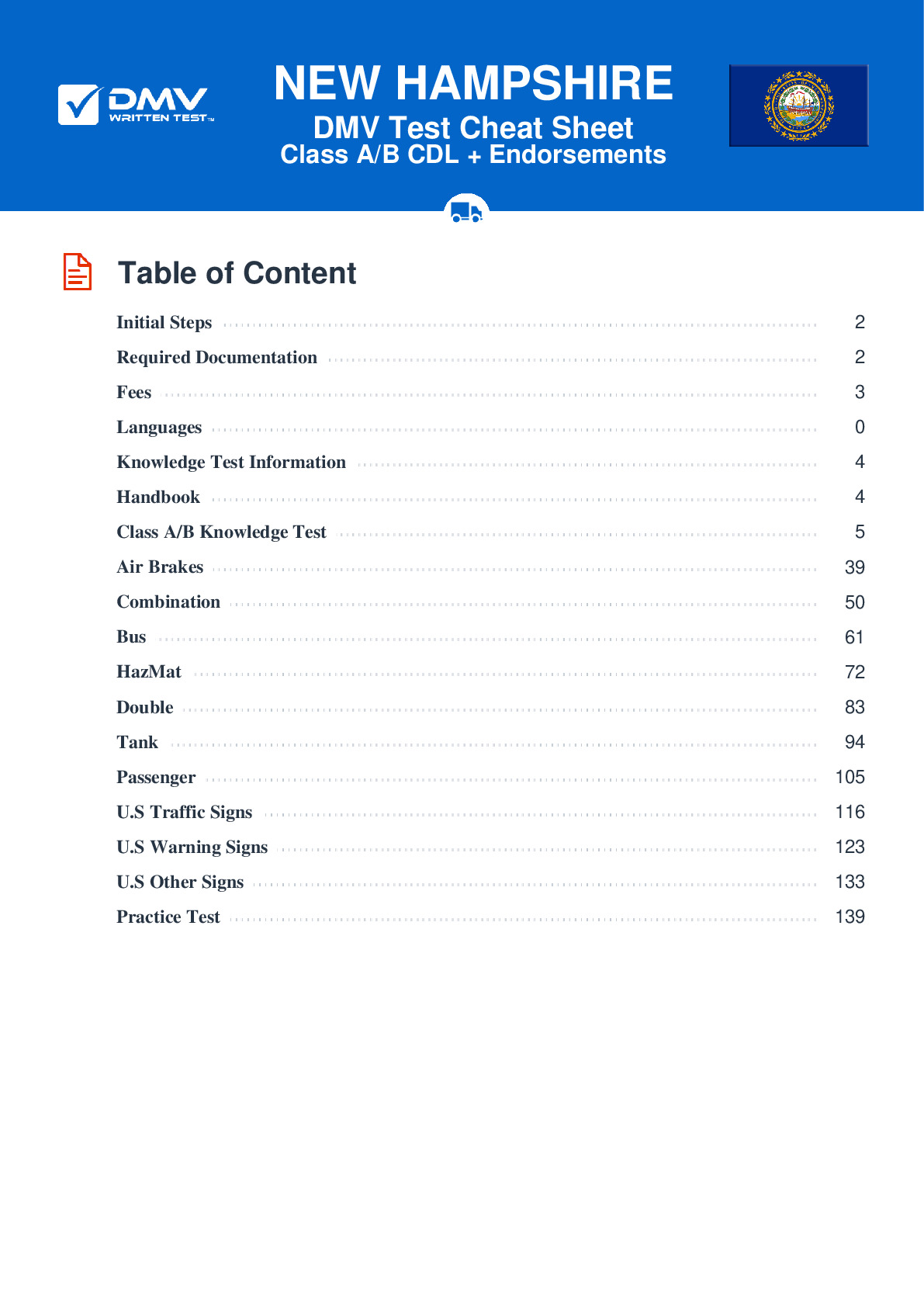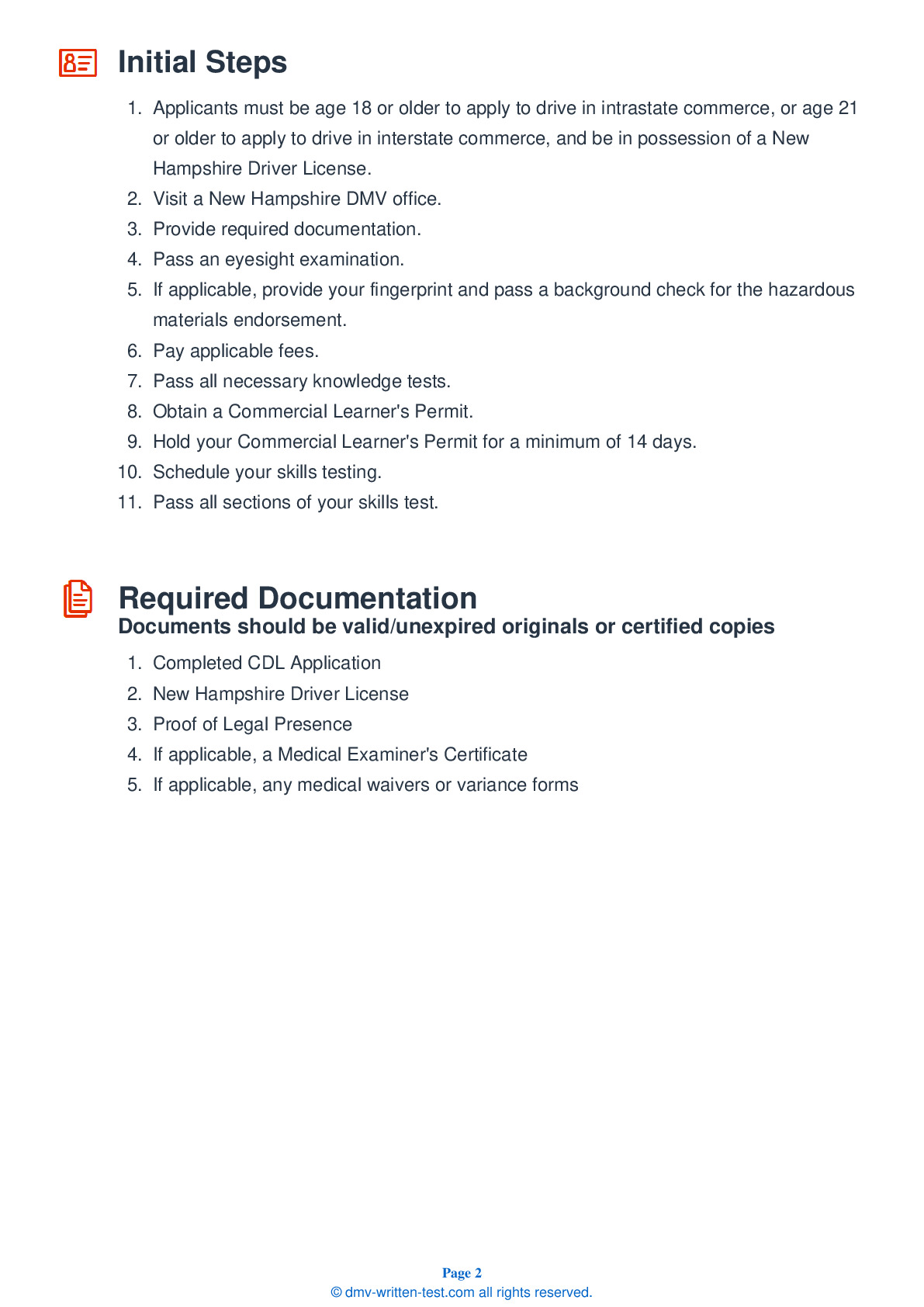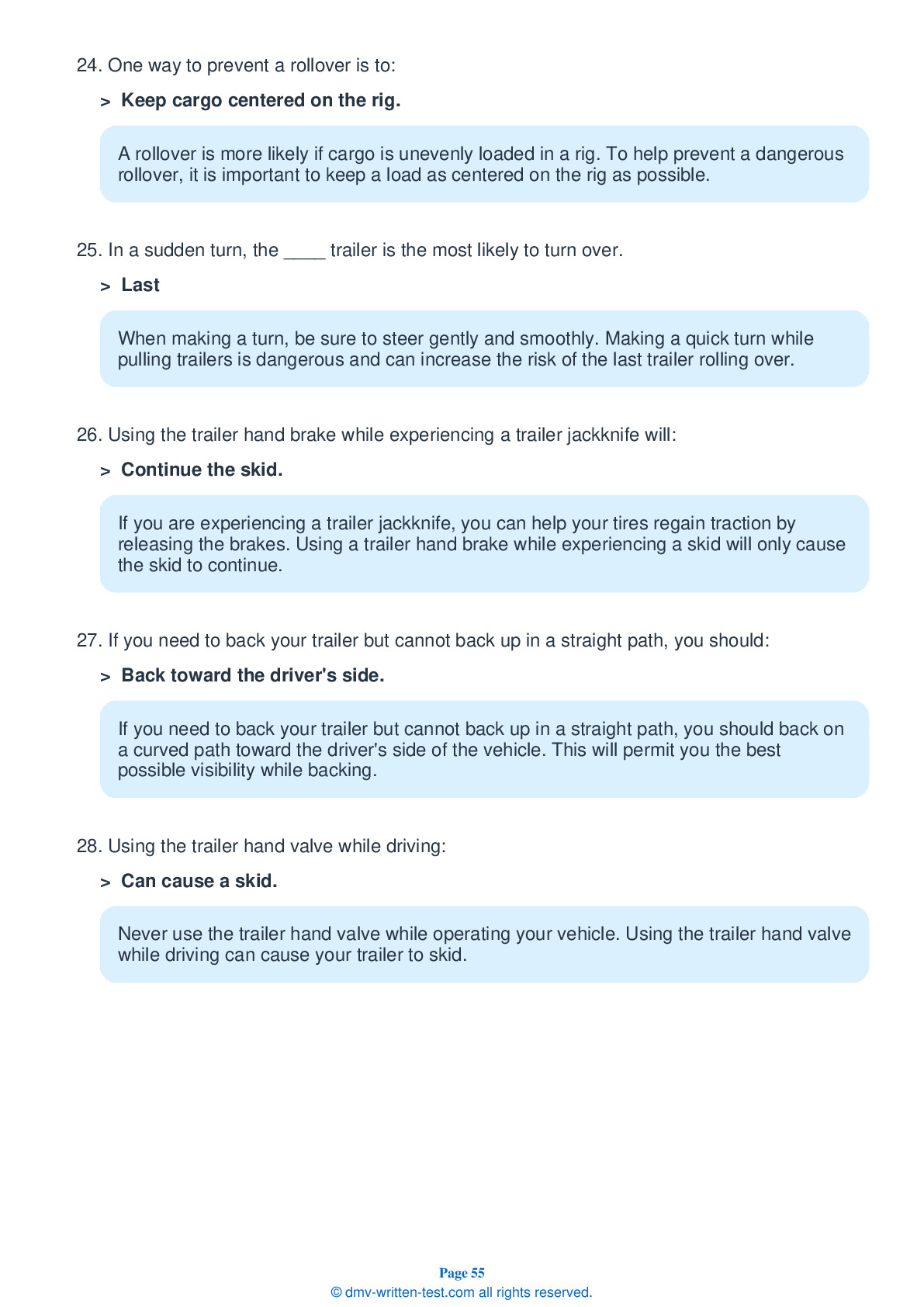Combination
All applicants who are applying for a Class A CDL should be prepared to take the Combination test. This test covers information found in Section 6 of the New Hampshire CDL Driver's Guide. Section 6 provides the information needed to safely operate tractor-trailers, doubles, triples, and straight trucks with trailers. The test is made up of 20 multiple-choice questions, and applicants will have 30 minutes to correctly answer a minimum of 16 questions. The Combination test is not a replacement for the Double/Triple endorsement test.
Number of Question
Passing Score
15. In a combination rig, it is best to make:
Explanation
When driving a combination vehicle, it is important to brake well in advance and look far ahead of your vehicle to avoid the need for sudden stops. Making habits of these actions will help you prevent your trailer from jackknifing.
16. If you need to back your trailer but cannot back up in a straight path, you should:
Explanation
If you need to back your trailer but cannot back up in a straight path, you should back on a curved path toward the driver's side of the vehicle. This will permit you the best possible visibility while backing.
17. The trailer hand valve should be used:
Explanation
The trailer hand valve, also called the trolley valve or Johnson bar, is used to work the trailer brakes. It should be used only to test the brakes.
18. If a trailer is too high:
Explanation
Before coupling together a tractor and a trailer, you should make sure the trailer is at the proper height. If the trailer is too low, the trailer nose may be damaged. If the trailer is too high, it may not be able to couple correctly.
19. A loss of air pressure in the emergency line will cause:
Explanation
The tractor protection valve keeps air in the trailer's braking system should the trailer break away or develop a leak. A loss of air pressure in the emergency line will cause the tractor protection valve to open and the emergency trailer brakes to activate.
20. If you press the tractor air supply control and your trailer's spring brakes do not release, you should:
Explanation




